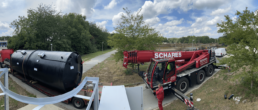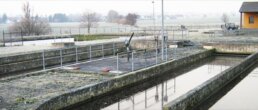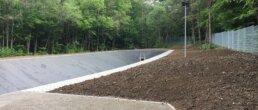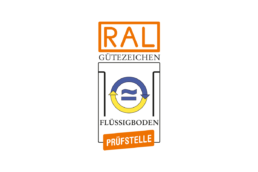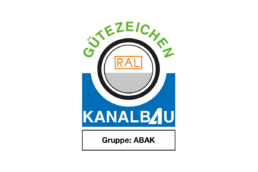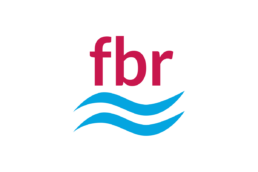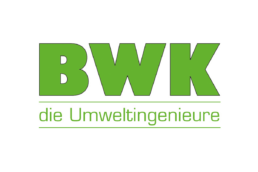IWR - Engineering Office for Water and Resource Management
Plan with us!
We design & manage water supply, drainage and wastewater treatment projects. In addition, we offer individual operational management and municipal consulting. In doing so, we always act competently, creatively and personally.

Dipl.-Ing. Frederik Maurer, Managing Director of IWR GmbH
What drives us
We place a special focus on the protection of the environment and the well-being of people. Therefore, our dedicated team develops and maintains a sustainable and economical infrastructure around water.
Where we come from
Our managing director Dipl.-Ing. Frederik Maurer founded the engineering office in 2012. He enthusiastically shares the knowledge he gained in his many years of experience in urban water management as well as in municipal operations with the IWR team.
What makes us strong
We regard ourselves as interdisciplinary problem solvers and enjoy taking on challenges. Deep knowledge, our reliable partners and sustainable thinking & acting make us strong.
Services of IWR GmbH
Our services in water management and resource management are multifaceted: we provide comprehensive advice on site drainage, water protection or storm water treatment issues. We also offer a range of other services such as municipal operations management / operations consulting, flood protection and heavy rainfall prevention or sewer rehabilitation. We are also one of the leading engineering companies in Germany when it comes to negative pressure drainage. Extensive expertise and many years of experience in urban water management make us a reliable partner at your side. Learn more about our services!
IWR GmbH: your competent engineering office for water management in Cologne
7. February 2024
Burst lining Elly-Beinhorn-Straße
Modernisation of the drainage infrastructure In close cooperation with Stadtentwässerungsbetriebe…
15. January 2024
Ladder inspection sewer network Böblingen
90 ladders and steps tested at 31 facilities In December 2023, the annual inspection of ladders…
9. January 2024
Sewer rehabilitation Gevelsberg
Extensive sewer rehabilitation completed IWR is pleased to announce the successful completion of…
9. January 2024
Protected: Project management for new waterworks
This content is password protected. To view it please enter your password below: Password:
6. September 2023
Successful triathlon
Great results at triathlon! Last Sunday at the Carglass Köln Triathlon 2023, IWR was represented…
7. June 2023
Company outing to the museum – exhibition WASSER
The exhibition ‘Wasser’ The exhibition Wasser (German for ‘water’) at…
1. June 2023
Sewer rehabilitation Körperich
Effective solution for the reduction of infiltration water As subcontractors of our partner office,…
15. May 2023
Blackwater disposal at UCB
Blackwater disposal at the Environmental Campus Birkenfeld (UCB) The kick-off meeting for the…
11. May 2023
Remote inspection with “ARIKI”
Remote inspection project launched Successful kickoff of ARIKI, a new project concerned with the…
27. April 2023
Specialist planner for site drainage
Successful participation with certification: Specialist planner site drainage Our team member…


